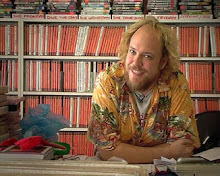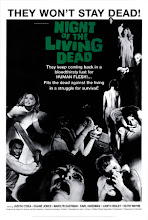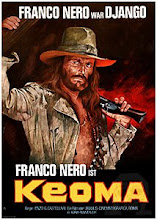 Sonny Chiba’s Dragon Princess
Sonny Chiba’s Dragon Princess Japan 1981 colour
aka Ryu No Oujo, Dragon Princess
Directors Yataka Kodaira, Yutaka Kohira Writer Hirô Matsuda
Cast “Sue”/Etsuko Shihomi, Sonny Chiba, Yasuaki Kurata (Masahiko), Jirô Chiba
In the past year on Schlock Treatment we’ve screened the entire Street Fighter series of Sonny Chiba, Japan’s less-genteel answer to Bruce Lee. For forty years his brutarian’s fists, mono-brow and contorted face of pure hatred have come to signify Japanese pulp cinema. And even in a film where the main star is Chiba’s protégé, Sister Street Fighter Sue Shiomi, Sonny’s name is still there in the title.
Sonny Chiba’s Dragon Princess opens with a spectacular and stylish set-piece in which Chiba faces his rival for the karate school throne. The evil Nikkaido hoodwinks Chiba with the help of his karate cronies and is almost torn to pieces with his wide-eyed young daughter watching. But not without a fight; with the crash zoom clicking into sixth gear, Chiba proves he can cop a dagger in the eye and STILL blind his opponent with his bare fingers.
 Left for dead, the now-crippled Chiba holes up in San Francisco and subjects his reluctant daughter Yumi to a punishing course in karate, barking orders from behind his eye patch. His schedule may last 10 years, but thanks to the magic of montage barely lasts five minutes, and he expires not even a quarter of an hour into the film. Being the good daughter, the adult Yumi (Sue Shiomi) agrees to avenge her father’s enemies; cut to Tokyo, where the evil Nikkaido and his karate school are more powerful than ever, and even high-ranking police and politicians are in his pocket. He organizes a karate tournament to cement his prestige, but of course uses his cronies, now known as “The Big Four”, to assassinate their competition! A newcomer offers to dispatch the annoying Yumi to her doom, but the spirit of Chiba…Chiba… still burns strong within her, and even with her broken arm in a sling, she faces off against her Nikkaido and The Big Four.
Left for dead, the now-crippled Chiba holes up in San Francisco and subjects his reluctant daughter Yumi to a punishing course in karate, barking orders from behind his eye patch. His schedule may last 10 years, but thanks to the magic of montage barely lasts five minutes, and he expires not even a quarter of an hour into the film. Being the good daughter, the adult Yumi (Sue Shiomi) agrees to avenge her father’s enemies; cut to Tokyo, where the evil Nikkaido and his karate school are more powerful than ever, and even high-ranking police and politicians are in his pocket. He organizes a karate tournament to cement his prestige, but of course uses his cronies, now known as “The Big Four”, to assassinate their competition! A newcomer offers to dispatch the annoying Yumi to her doom, but the spirit of Chiba…Chiba… still burns strong within her, and even with her broken arm in a sling, she faces off against her Nikkaido and The Big Four.
At this point it’s the standard “father uses his child as an instrument of revenge” scenario, a colour-by-numbers script virtually indistinguishable from a thousand Hong Kong chop-sockey retribution operas. And it SOUNDS like one too, imported by a fly-by-night exploitation company, translated and dubbed to the level of pre-school comprehension by the same jackasses who do the brown end of the kung fu market. What Dragon Princess does have, aside from Sonny Chiba’s formidable presence (and his ghost can be truly felt throughout the film), is the striking figure of Sue Shiomi, the Goddess of 70s Japanese pulp cinema. She has the chops and the acrobatics, for sure, but she also does the “mask of vengeance”, a certain facial expression used in martial arts films to convey a bottomless well of pain and self-righteous anger, to a T.
We’re proud at Schlock Treatment to reunite the Street Fighter and Sister Street Fighter for another round in the 1981 Sonny Chiba’s Dragon Princess.
 Devil’s Express
Devil’s Express USA 1976 colour
aka Gang Wars, Death Express
Director Barry Rosen Writers Niki Patton, CeOtis Robinson
Cast Warhawk Tanzania (See-Fu), Wilfredo Roldan (Rodan), Sam DeFazio, Brother Theodore
From a time when every white kid squinted their eyes, made dying cat howls and broke their legs jumping into the garage wall trying to be Bruce Lee comes a Z-grade blaxploitation zombie kung fu masterpiece that tries - oh, how it tries - to cover all bases, but all it really does is redefine the term “black action”. Set mainly in a New York subway, it’s so black you can hardly see any action. Can you dig it?
 Warhawk Tanzania plays kung fu master Luke Curtis, known by his pupils as See-Fu. On a meditation retreat to China, his star pupil Rodan (as in the giant Japanese pterodactyl) unwittingly picks up a silver medallion from the tomb of an ancient demon. Being the Seventies, ugly jewellry is considered the height of fashion, and they return to New York. The demon, meanwhile, bursts out of his tomb, jumps on the first ship to Harlem, possesses a brother-man, and wanders comically through the subway with huge white eyes painted onto his lids with liquid paper, looking for souls to feed on. The trail of murders sparks a gang war between local kung fu-kicking triads the Red Dragons and ghetto gang the Black Spades (I kid you not). When Rodan has his necklace (and his head) torn off, Warhawk finally has a moment of clarity - see, the meditation finally pays off - and he bravely heads into the subway for a brother-to-brother showdown.
Warhawk Tanzania plays kung fu master Luke Curtis, known by his pupils as See-Fu. On a meditation retreat to China, his star pupil Rodan (as in the giant Japanese pterodactyl) unwittingly picks up a silver medallion from the tomb of an ancient demon. Being the Seventies, ugly jewellry is considered the height of fashion, and they return to New York. The demon, meanwhile, bursts out of his tomb, jumps on the first ship to Harlem, possesses a brother-man, and wanders comically through the subway with huge white eyes painted onto his lids with liquid paper, looking for souls to feed on. The trail of murders sparks a gang war between local kung fu-kicking triads the Red Dragons and ghetto gang the Black Spades (I kid you not). When Rodan has his necklace (and his head) torn off, Warhawk finally has a moment of clarity - see, the meditation finally pays off - and he bravely heads into the subway for a brother-to-brother showdown.
Devil’s Express was Warhawk’s second and final film after Force Four (aka Black Force, 1975). Warhawk spends most of his screen time running down “honkies” and proving he’s a Man of the People - saying no to drugs, giving street kids a hi-five, and eating Chinese takeout - with chopsticks - with his wooooman. What he can’t do, and it’s apparent from the start, is fight for shinola; as a bottom-shelf Jim Kelly, he’s all attitude with no acting OR fighting chops to back it up. His punches land six inches from their intended destinations, all with the most inappropriate sound effects. As a distraction to how bad his fighting is, he steps on a Chinese kid’s throat and bursts a blood vessel. Dramatic? No. Ludicrous? Of course. And that’s the charm of a Warhawk Tanzania film. By the way - ever seen a Chinese kid with an afro?
 For a no-name cast, there’s a surprise sacrilicious streetside ranting by New York eccentric Brother Theodore: “Moses is dead, Mohammed is dead, Buddha is dead... and I’m not feeling so hot myself.” Bad acting, ham-fisted fighting and peppered with the most gutwrenchingly exaggerated jive (“I know where you’re coming from, See-Fu. I can DIG it!”), Devil’s Express is a film that succeeds in making Huggy Bear look like Humphrey B. Bear. Can YOU dig it?
For a no-name cast, there’s a surprise sacrilicious streetside ranting by New York eccentric Brother Theodore: “Moses is dead, Mohammed is dead, Buddha is dead... and I’m not feeling so hot myself.” Bad acting, ham-fisted fighting and peppered with the most gutwrenchingly exaggerated jive (“I know where you’re coming from, See-Fu. I can DIG it!”), Devil’s Express is a film that succeeds in making Huggy Bear look like Humphrey B. Bear. Can YOU dig it?
Memories of the Devil's Express shoot from production assistant Spike can be found here
 Sonny
Sonny  Left for dead, the now-crippled
Left for dead, the now-crippled  Devil’s Express
Devil’s Express Warhawk
Warhawk  For a no-name cast, there’s a surprise sacrilicious streetside ranting by
For a no-name cast, there’s a surprise sacrilicious streetside ranting by 




















































































1 comment:
Hey, thanks for the link back. After all these years, I've still never actually seen the finished film. I did order it once from Amazon, the page had the right artwork and all, but what I got was some equally low-grade Mafia flick instead. BTW, Brother Theodore was just great, a really nice guy (though if he were alive he'd probably hate for word of that to get out).
Post a Comment